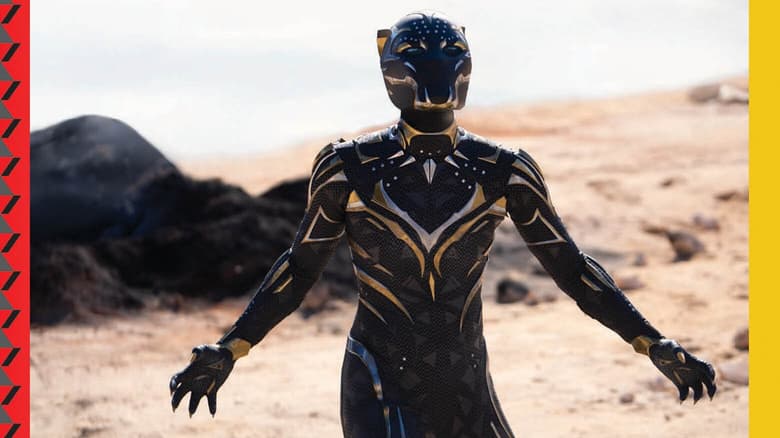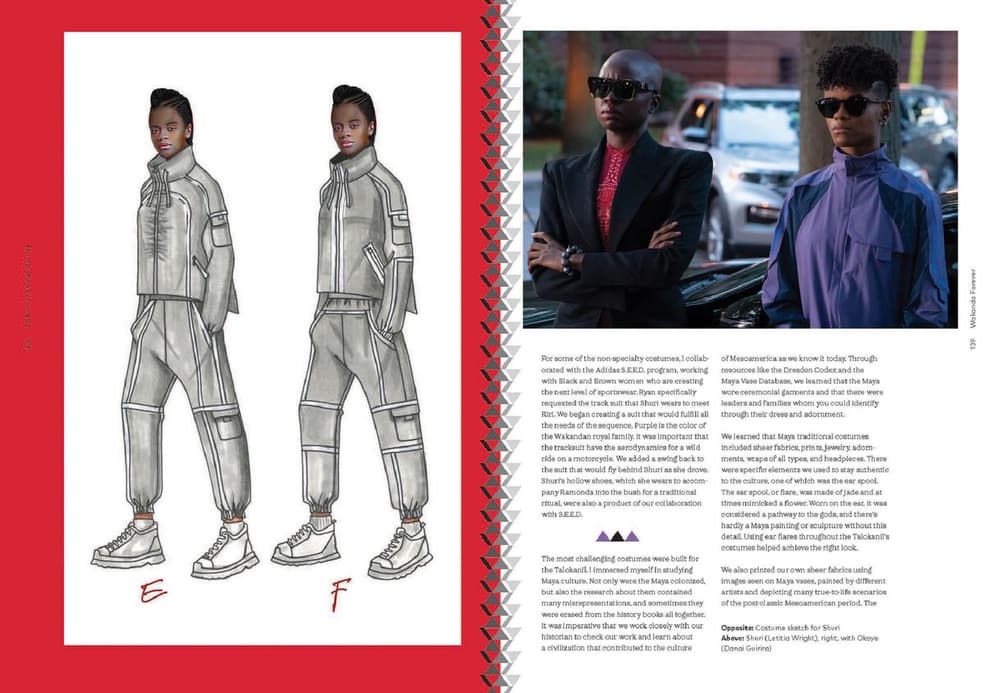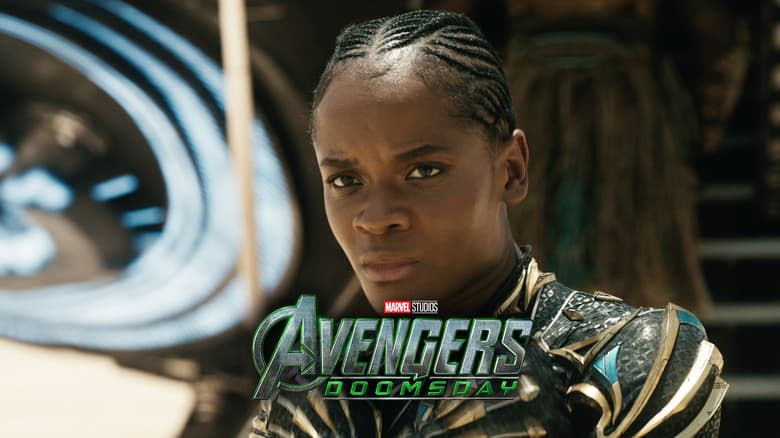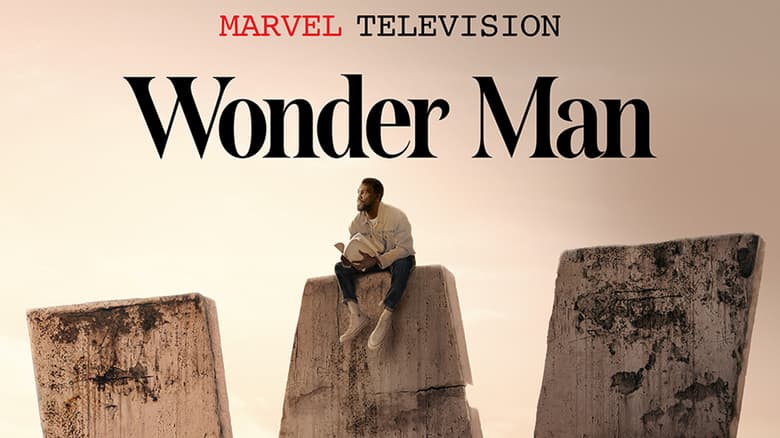Exclusive Excerpts from ‘The Art of Ruth E. Carter’
This visually deluxe book—with a foreword by Danai Gurira—takes you through the legendary career of the costume designer, including her work on Marvel Studios' ‘Black Panther.’
Preorder your copy of The Art of Ruth E. Carter from Chronicle Books, in stores May 23.

The Art of Ruth E. Carter: Costuming Black History and the Afrofuture, from Do the Right Thing to Black Panther is a deluxe art book that celebrates the legendary career of two-time Academy Award winning costume designer Ruth E. Carter.
For three decades, Ruth E. Carter has shaped the story of the Black experience on screen—from the eighties streetwear of Do the Right Thing to the royal regalia of Coming 2 America. Her work on Marvel Studios' Black Panther and Black Panther: Wakanda Forever not only brought Afrofuturism to the mainstream, but also made her the first Black winner of an Oscar in costume design and the first Black woman to win two Oscars in any category. In 2021, she became the second-ever costume designer to receive a star on the Hollywood Walk of Fame.
Collecting Carter’s complete body of work through personal stories, process art, film stills, mood boards, and more, The Art of Ruth E. Carter reveals the beautiful details of the prolific designer’s most iconic creations, further illuminating her artistic process and historic approach.

Carter shares her origins too, recalling a trip to the sporting goods store with Spike Lee to outfit the School Daze cast, and a transformative moment stepping inside history on the set of Steven Spielberg’s Amistad. She recounts anecdotes from dressing the greats: Eddie Murphy, Samuel L. Jackson, Angela Bassett, Halle Berry, Chadwick Boseman, and many more. She describes the passion for history that inspired her period pieces—from Malcolm X to What's Love Got To Do With It—and her journey into Afrofuturism.
Taken as a whole, Carter’s three-decade career is not just a collection of great films; it tells a story. Whether comedies or period pieces, biopics or Super Hero blockbusters, her films have shaped the narrative of the Black experience in American cinema. And her work is sure to inspire the next generation of storytellers.
Read two exclusive excerpts from The Art of Ruth E. Carter below, then preorder your copy from Chronicle Books ahead of its May 23 release!
ON THE CREATION OF SHURI’S BLACK PANTHER SUIT IN BLACK PANTHER: WAKANDA FOREVER:
The big dynamic costume that everyone was curious about was the new Black Panther suit and who would don it. We wanted the new Black Panther design to share the same aesthetics and functions as T’Challa’s suit. While the gorgeous black, silver, and gold suit was newly created for Shuri, it was imperative that we follow the aesthetic that was established in the first film as well as maintain the same connection to Africa. The Okavango triangle would cover the surface, and the molded claws and striations would be a raised design. What separated Shuri’s suit from T’Challa’s was the number of gold and silver raised pieces and the cat-faced gauntlets.
Shuri’s Panther suit needed very little structure added, only enough to give the incredible Letitia Wright a dynamic superhero silhouette. I approached this with caution, wanting to present a costume that was believable. I examined Letitia’s muscle sculpt and discussed with [film director] Ryan [Coogler] and [producer] Nate [Moore] specifically what was needed. The suit’s top layer includes the design details that were outlined in the sketch and explored through several fittings. The helmet was printed and tried on by the actress as well as by her stunt performers. In the end, Letitia Wright gave us chills with an incredible performance that honored her predecessor. When the Panther costume was on set, it dazzled and thrilled the crew to see T’Challa’s little sister take on her new role with vitality, as she had earned the role of the Black Panther.
Looking back over my career, I have dressed superheroes of the civil rights movement and then the first Black Panther, which was a full-circle moment. I never imagined that one day I would be dressing a Black woman as a superhero in the same way. Black women have always been strong; we just have a suit now to show it.
When it’s all said and done, there is a little praying that goes on. You hope that you’ve done it right. You wish you had more time. You want the culture to be represented in its best light, and you learn as you go.
For me, creating this new story through costumes was very different from working on the first Black Panther film, and equally challenging, if not more so. Especially with the crew having to wear masks or be online for most of our interactions. We had set the bar high with the first film, and we needed to meet and exceed that bar while still giving the audience something fresh and original. All of the actors connected with their costumes so deeply and were so aligned to the costume’s story and meaning, that it raised up all of their performances. We get these deeply beloved characters in wearable art.
We hope that when people watch Black Panther: Wakanda Forever they take in an incredible movie experience, their eyes are met with vivid visual storytelling, their hearts are connected to the beloved characters’ journey of grief and transformation, and their souls are enriched by finding representation and expanding their cultural horizons.

ON THE DESIGN OF THE TALOKAN IN “WAKANDA FOREVER”:
The most challenging costumes were built for the Talokanil. I immersed myself in studying Maya culture. Not only were the Maya colonized, but also the research about them contained many misrepresentations, and sometimes they were erased from the history books all together. It was imperative that we work closely with our historian to check our work and learn about a civilization that contributed to the culture of Mesoamerica as we know it today. Through resources like the Dresden Codex and the Maya Vase Database, we learned that the Maya wore ceremonial garments and that there were leaders and families whom you could identify through their dress and adornment.
We learned that Maya traditional costumes included sheer fabrics, prints, jewelry, adornments, wraps of all types, and headpieces. There were specific elements we used to stay authentic to the culture, one of which was the ear spool. The ear spool, or flare, was made of jade and at times mimicked a flower. Worn on the ear, it was considered a pathway to the gods, and there’s hardly a Maya painting or sculpture without this detail. Using ear flares throughout the Talokanil’s costumes helped achieve the right look.
We also printed our own sheer fabrics using images seen on Maya vases, painted by different artists and depicting many true-to-life scenarios of the post-classic Mesoamerican period. The vases were so incredible; using imagery from them was a way to have Maya history present in the costumes, even if, once the fabric was made into a garment, the effect was more abstract. The colors and patterns created a beautiful palette.
Then I was inspired by the Jaina figurines—a set of clay sculptures excavated on a pre-Columbian archeological dig on an island off the Yucatán Peninsula. We studied the adornments on these figurines, and they presented a plethora of ideas for clothing, jewelry, and headpieces. The sculptures were a significant help in creating the look for an underwater society that lived parallel to their relatives on land.
I needed to blend the rich culture of the Maya with the fact that the Talokanil were an underwater civilization, thousands of years old. This created an additional layer of difficulty. Ancient Maya costumes were made of natural fibers, jade, shells, and clay. These elements needed to be mimicked and made of materials that could withstand being submerged in water for hours. As we had seen with M’Baku’s costume, costumes underwater can be beautiful, but understanding the dynamics of buoyancy and color refraction is necessary when designing them. Fabrics float up. Weights are sometimes required to achieve a desired effect. Chlorinated water and salt water both wreak havoc on fabric dyes.
Namor, brought to life by the wonderful Tenoch Huerta, was to wear a ceremonial headpiece and shoulder piece designed to reference the feathered serpent, a Maya deity that is seen repeatedly wrapping the bodies of nobles in Maya art. The serpent symbolizes life above and below the earth and is associated with the underworld. Namor’s neck ring also contains two feathered serpents that meet at the center front, greeting a large pearl with open mouths. The pearl represents the ocean. The neck-ring design was inspired by the pyramid at Chichén Itza (also called Kukulkan), which has a staircase with two feathered serpents descending on each side; at the base the two heads face a cenote. We modeled the headpiece first in clay. The feathers were made to resemble kelp and fish fins. The serpent was cast and painted gold with elements inspired by blue and green jade and mother-of-pearl. The blue stone in the headpiece was to represent Talokan’s vibranium.

The Daily Bugle
Can’t-miss news and updates from across the Marvel Universe!







